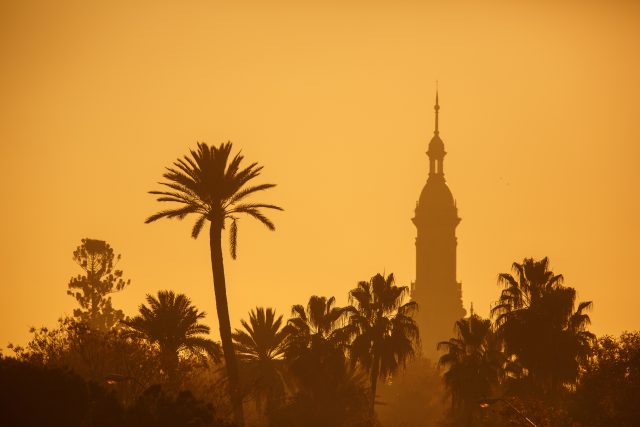This website uses cookies so that we can provide you with the best user experience possible. Cookie information is stored in your browser and performs functions such as recognising you when you return to our website and helping our team to understand which sections of the website you find most interesting and useful.
Is ‘mud rain’ bad news for Southern Spain’s vineyards?
By Louis ThomasSouthern Spain is forecast to receive a downpour of ‘mud rain’, prompting questions about what this could mean for the region’s winegrowers.

Also known as ‘calima’, it is a not uncommon occurrence during the summer months when fine sand and dust from the Sahara is blown northwards across the Mediterranean by warm winds, resulting in the air taking on an orange hue. When this calima combines with rainfall, it forms a precipitation known as ‘mud rain’.
Last week, Spain’s meteorological agency AEMET forecast that parts of the country would be hit by storms, calima, and, in some areas, a combination of the two.
The dramatic images that arise from such occurrences, such as that above, might suggest that there will be dramatic consequences for vineyards in affected areas, but, according to figures in the industry, though it may look apocalyptic, it isn’t exactly a disaster for producers.
César Saldaña, president of the Consejo Regulador Jerez-Xérès-Sherry, said that there was “no risk at all” presented by the dust to the region’s vines.
“The dust from the Sahara is something which we are used to,” added Javier Hidalgo de Argüeso of Sherry producer Hidalgo-La Gitan.
“It happens when the wind blows from the south east in spring and summertime,” he continued. “You hardly notice it, except when it rains at the same time and then you see the yellow/orange stain on your car, glasses, etc. Something that neither the vines nor trees nor any other plants suffer from.”
Indeed, this meteorological phenomenon may actually be advantageous for vintners.
A spokesperson for DO Jumilla, located in the region of Murcia, said: “The mud rain from the Sahara is rich in Phosphorous, and therefore it would not be the worst for vineyards.”
Phosphorus plays a pivotal role in the vine’s ability to photosynthesise, and is also crucial to the development of root systems. A lack of Phosphorus will lead to reduced vine growth and yields.
Saharan sand might not be an issue for producers, but a lack of water definitely is.
“We have not had any rain in Jerez for some time now,” said Saldaña. “And certainly not a drop during the harvest season, which is about to end.”
“In Jumilla we would be happy for any kind of rain,” said the spokesperson for the DO. “The situation here is very serious. Grape production has fallen by more than 50% due to a severe drought that is now in its third year. If it doesn’t rain this autumn, we will lose many vineyards.”
The water shortage isn’t just hitting producers in Southern Spain – Catalonia has been wrangling with drought too, and it has forced some wine giants to take pretty drastic action to keep the demand supplied.
While sand storms might not be a risk to grapes, they can be to public health, and climate change is making them more frequent. The United Nations has declared 2025 to 2034 to be the ‘Decade on Combating Sand and Dust Storms’, with plans to promote international cooperation to reduce the impact of these events.
Related news
Why Rioja continues to 'bask in glory'

